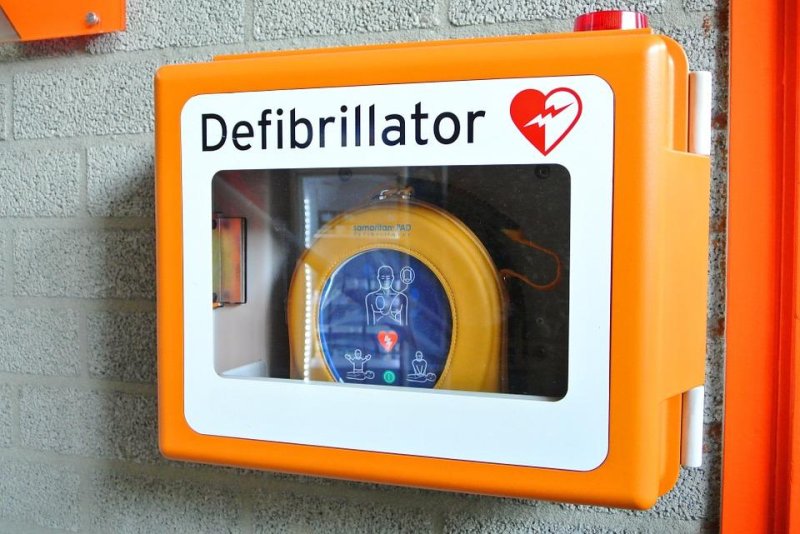A new study found automated external defibrillators are often not registered or maintained, and can fail as a result of the improper care. Photo by
yourschantz/PixaBay
April 24 (UPI) -- Research shows that areas of the United States where there are high numbers of unregistered automated external defibrillators, or AEDs, also have an increased failure rate of those AEDs.
Researchers at the University of Louisville School of Medicine in Kentucky have found significant variability exists in how AEDs are registered and maintained causing concern about failure rates of the medical devices. Currently, there are no national standards for the maintenance and registration of AEDs.
Public access AEDs are now commonly found in schools, community centers, government buildings and workplaces as a way to give potentially life-saving treatment for cardiac arrest.
"Sudden cardiac arrest is a leading cause of death in the United States," Keisha Deonarine, senior director of community health for the American Heart Association in Kentuckiana, said in a press release. "The American Heart Association believes it is important to do a weekly or monthly visual inspection of AEDs to ensure they are in working order. It may be the difference between life and death."
For the study, researchers assessed AEDs in public, non-hospital settings in four geographically distinct regions in the United States including Seattle, Suffolk County, N.Y., Central Illinois and Louisville.
Researchers found that more than one-fifth, or 21 percent, of the devices failed at least one phase of testing. Five percent had expired batteries, which caused them to not power on at all rendering them useless in an emergency.
The study found that public access AEDs in areas where there was a higher rate of registration were significantly more likely to pass testing. AED registration was greater than 80 percent in Seattle and Suffolk County, with no battery failures found in Seattle and only 2 percent in Suffolk County.
Louisville and Central Illinois had a less than 25 percent rate of registration and showed a higher test failure rate of 19.8 percent in Louisville and 38.2 percent in Central Illinois, which also had the highest regional battery failure rate of 12.36 percent.
"We know that rapid bystander CPR and the appropriate use of AEDs increases the survival rates for the more than 350,000 victims of sudden cardiac arrest in the United States each year," said Dr. Brad Sutton, a cardiologist, professor of medicine and assistant dean for health strategy and innovation at the University of Louisville. "However, we found that the percentage of public access AEDs that fail standardized testing is quite high, and the incidence of potentially life-threatening malfunction is likely underreported."
The study was presented at the American Heart Association Scientific Session.















